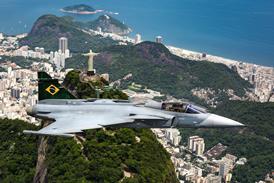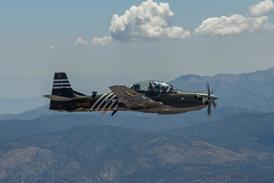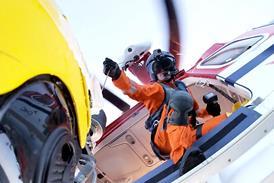Raytheon has conducted initial tests of its Scorpion low-cost directional infrared countermeasures (DIRCM) system, which uses the in-production seeker gimbal and processor from the AIM-9X Sidewinder air-to-air missile. Bench tests in August demonstrated that a modified AIM-9X pointer can transmit a good quality laser beam, says Mike Booen, vice-president directed-energy programmes, writes Graham Warwick.
A prototype demonstration of the Scorpion laser jammer is being funded by the US Navy under a rapid technology transition programme to develop a low-cost protection system for helicopters including the Bell AH-1Z attack helicopter. The US Air Force is also providing funding under a defence acquisition challenge programme to demonstrate a DIRCM micro-turret, called Quiet Eyes, that is “significantly” cheaper, lighter and more reliable than the Northrop system now being installed on its transports.
Scorpion includes missile-warning sensors, pointer, controller and low-power jamming laser in a pod mounted on the tip of the AH-1Z’s stub wing. The Quiet Eyes configuration comprises just the pointer, controller and laser in a low-drag micro-turret. Booen says Raytheon has also begun studying the system’s installation on the US Navy’s tactical aircraft.
The recent bench test involved transmission of a single-band laser beam using the AIM-9X seeker gimbal. Booen says Raytheon is working with AcuLight to incorporate a multi-band laser able to defeat a wider range of shoulder-launched, infrared-guided surface-to-air missiles. The company plans to demonstrate next year that the prototype system meets range requirements.
Source: Flight International




















